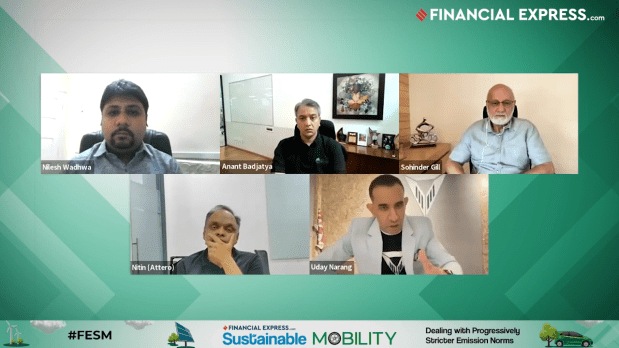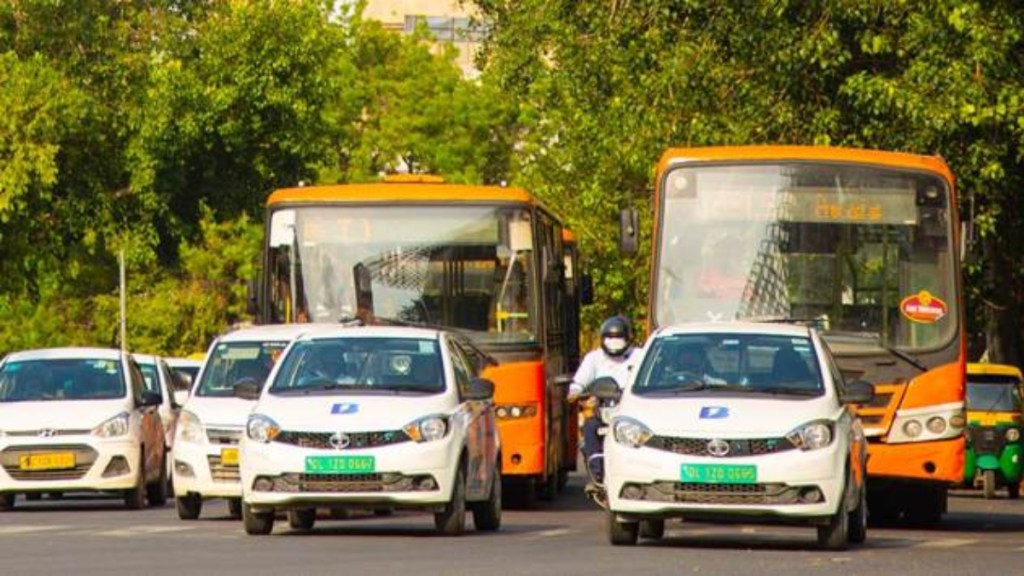As per the latest data shared by the Society of Manufacturers of Electric Vehicles (SMEV), EV sales in India crossed the million unit mark in FY2023, but the question is are all electric vehicles green?
Financial Express hosted a virtual webinar on the theme of ‘Sustainable Mobility’ in a bid to understand to the ground realities and thoughts of the industry stakeholders. In a panel discussion on the topic of ‘How Green Electric Vehicles really are?’, the speakers shared their thoughts on sourcing of key materials for lithium-ion batteries, battery recycling, EV charging power generation and the role of subsidies in future growth areas. The panelists included –
- Sohinder Singh Gill, CEO, Hero Electric and President, Society of Manufacturers of Electric Vehicles
- Anant Badjatya, CEO, Sun Mobility
- Uday Narang, Founder & Chairman, Omega Seiki Mobility
- Nitin Gupta, Co-Founder & CEO, Attero Recycling
The panelists unanimously agreed upon the need for a long-term consistent policy that takes into account ground realities and consultations from stakeholders.
Gill stated that when electric vehicles are deployed on roads, it means the tailpipe emissions are done away with. He said the EV industry has been evolving globally as well as in India.

“Its ultimately customer acceptance of the product that will come over time. There have been follies, mistakes, and negativities such as low-speed, fire incidents, and sub-standard products among others. The EV industry has passed through what can be described as ‘Walking on fire’ and that’s why it took so much time when the products started to get straightened out and customers started liking it,” Gill shared the evolution of the EV industry.
“Going green is one thing, but air pollution is a serious issue. India spends around $95 billion (Rs 783,465 crore) in tackling health hazards related to air pollution. A study found out that 1.7 million people died prematurely because of air pollution in India,” added Badjatya.
Nitin Gupta added that there are multiple facets to the EV ecosystem, tailpipe emissions is only one aspect. For lithium-ion batteries, where extraction of the key raw materials is a challenging aspect and recycling of batteries would play a key role to drive the EV growth story, “We are working closely with the government and we believe in the next five years with proper Recycling Policy, India can become self-reliant critical battery materials.”
“Rome was not built in a day. We want solutions right away, but it takes time to develop those. We have got a number of people, organisations incumbents and start-ups all coming into the ecosystem. A lot of people want quick solutions, but there is no such thing as quick solutions. This is a marathon and a journey. We have to keep moving forward,” Narang commented on the focus of serious EV stakeholders.
The panelists agreed that companies that are truly committed to the cause of electrification will invest and bring in innovative solutions. One cannot expect miracles overnight, thus an alliance-based ecosystem will help the industry flourish and bring in solutions made-in-India for India and the world.



















